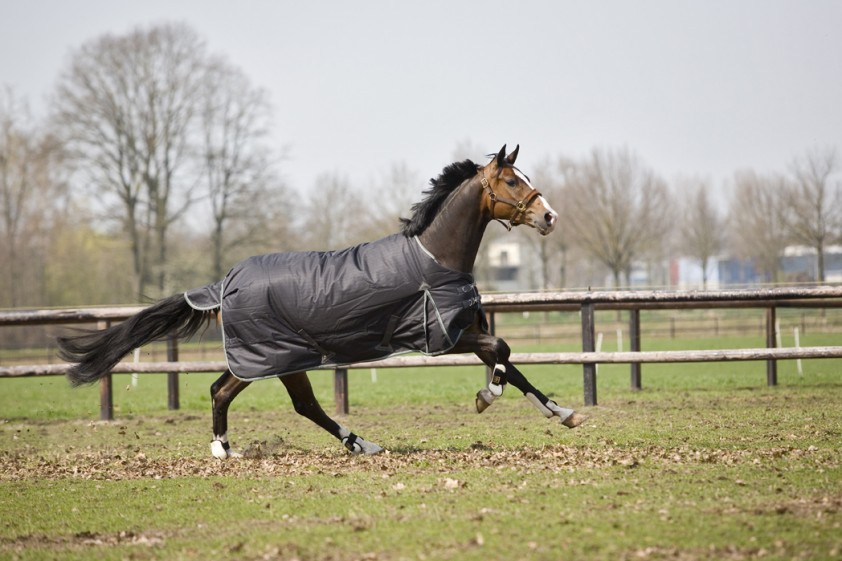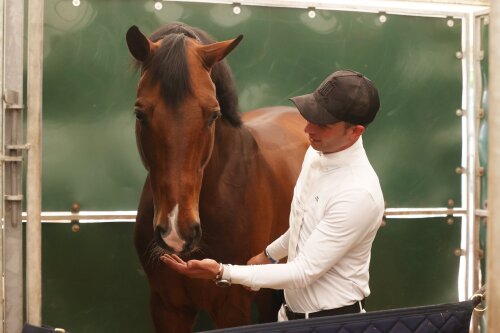At a time when the purchase and sale of horses is becoming increasingly important in equestrian sports, both for professionals and amateurs, a haphazard sale advertisement no longer always provides the right outcome. With these twelve tips you will ensure a smooth, good and fair sale ...
1. Looks do count
When most people look for a horse, they naturally have some basic requirements in mind such as age, discipline, size, ... that they like to see ticked off. In addition, people often want something pleasing to the eye as well, so make sure your horse is ready for sale! A clean, pretty, attractive, and above all correctly trained horse sells more easily than one that appears unkempt.
2. Use eye-catching photos
Sales ads on the internet are often liked or disliked at a glance. It is therefore important that you use clear photos that immediately attract attention. Make sure the horse is in full view, groomed, and that its good qualitites are emphasized.
For stand photos it is advisable to position the horse in a square stand, show riding photos of the different gaits, and for a sport horse you should also provide some relevant photos with regard to the discipline. Take your photos in nice, sunny and clear weather, and make sure the arena is neat and tidy. Cleaning up some mess, horse and rider in a set with neutral colors, it all helps.
Be sure to take enough photos so that you can pick out the best ones. Choose a photo that shows the horse alert and energetic, but also one that shows the rider sitting and riding correctly. All photos need to be of good and clear quality, with the horse centered and aligned with the background.
3. Videos make the difference
Besides a good photo which immediately determines the first impression, an additional video is usually decisive in arousing buyers' interest. With the right video you can highlight the qualities of your horse, but make sure you don't make the video too long.
The perfect video has a duration of at most two to three minutes. In these minutes, show all three gates of your horse, and for sport horses, be sure to add a few clips in which they practice their discipline. Include some confirmed exercises for dressage horses, add (a part of) a course for a showjumping horse, etc. If possible, make sure you can film in HD because this often provides sharper images.
4. Honesty is the best policy
As with everything, honesty is always the best policy. Describe the horse's characteristics and performances in a clear and honest way in your sales advertisement, so that potential buyers know what to expect. Keep the advertisement professional, short and concise. State the pedigree, character, (sport) level, the sport performance, flaws and potential of the animal. In addition, you inform about the age, height and of course the studbook.
5. A correct price
A price can make or break a sale. If you ask too much, your horse will be for sale for an unnecessarily long time, so that people may start to think that "there must be something wrong with the horse". For the same reason, it is also often not good to ask too little. A correct price is based on training level, potential, health, character, pedigree and gender.
Do you have doubts about what a correct price is? Then do not immediately base yourself on other horses that are offered on sales sites. In that case, if necessary, call in a third person who can help you determine the price. Would you rather only specify a price range in the advertisement? Then make sure that you inform interested parties more clearly about the desired price by telephone. If you prefer not to do that either, ask about the buyer's budget.
6. Choose the right sales platform
Is your sales advertisement completely finished? Then make sure you use the right online platforms to advertise on. This depends on what kind of horse you have and for what discipline the horse will be used. In addition to online sales platforms, you can also check which Social Media channels can be suitable for sharing your advertisement. Also inform instructors, farriers and possibly your veterinarian that your horse is for sale. These people often have many connections, and will therefore be approached more quickly with the question of whether they know a nice horse for sale.. Yes, yours!
7. Be prepared
Make sure that all your horse's papers are collected in one place well in advance, so that you can grab it when a viewer comes. If you have any additional information about the horse, have this at hand as well when a potential buyer comes to test or look at your horse.
8. Quick responses
Do you get a call or do you receive an e-mail about your horse? Then respond immediately and in full. Selling a horse takes energy, but people who get a quick response to their questions are more interested than when they have to wait days for a response. So take the time to answer emails and phone calls, and make sure you don't leave potential buyers with further questions.
Also try to act proactively, and occasionally call some interested buyers. Please note that you do not put too much pressure, and always read the situation carefully. If you don't have the time or desire to pay attention to this yourself, engaging a trader is a good alternative.
9. Be clear about health and other issues
As a seller you are obliged to report any flaws your horse might have. Stable vices such as cribbing or waving, medical problems such as roaring, or a history of laminitis, all should be clearly stated. If you know of any medical problems and/or difficulties in behavior or training, you should inform the potential buyer about this.
If you don't do this you run the risk of having to take your horse back, and you give the horse world a bad name. If necessary, indicate to the buyer that your vet can and may provide information about your horse. If the buyer does not respond to this, then this is for his own responsibility because he or she has not properly performed his obligation to investigate.
This can make a big difference in the event of a dispute in the future. A buyer who has the horse extensively inspected should not be faced with any surprises. If your horse is occasionally quite naughty, do not offer it as a beginner's horse. This is where the biggest possible accidents can happen.
10. Attention when testing
If you offer a riding horse, potential buyers will in many cases first want to try out the horse for themselves. They can then check whether your sales advertisement was truthful, and whether the horse meets their wishes. So make sure that this can be done in a safe way, and if possible provide an indoor or outdoor arena to ride in.
Be sure to arrange your liability insurance in time, so that you will not be faced with unpleasant surprises if something were to happen while testing your horse. After all, it is your horse and therefore also your responsibility that everything goes well and safely.
11. Put everything on paper
If the interested parties decide that they want to buy the horse, it is advisable to put this in a sales contract. With such a sales agreement, both parties know exactly where they stand and problems after the sale are less likely to get out of hand.
You report the details of the horse, the agreed price, any flaws of which the buyer is aware, the sale and delivery date and other important information. If you want more information about how to draw up a good sales contract, you can get all further information HERE.
12. Background check of the buyer
Last, but certainly not least, it is highly recommended to do a background check of your buyer. A responsible seller wants his horse to end up well, and not end up in the trade or worse.
An honest advertisement often ensures that the people who respond know what they are getting into. Do you have a viewer? Be honest, open and talk about horses in general. Ask about their experience, the vet or farrier they have, and where the horse will be stabled. Don't be shy to Google the buyer, or look them up on Facebook. Sometimes you don't find anything and sometimes you find enough to know that you better look a little further, although of course you hope for a 'that's okay' feeling.
Source: Hoefslag



